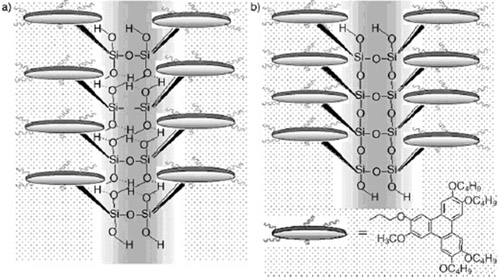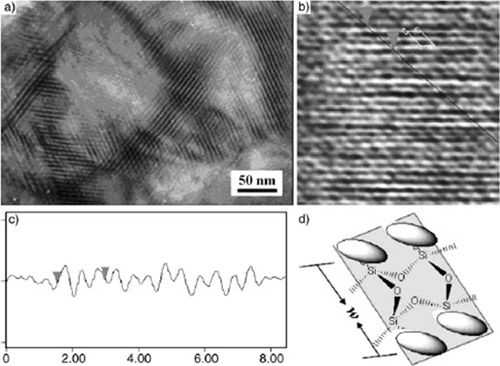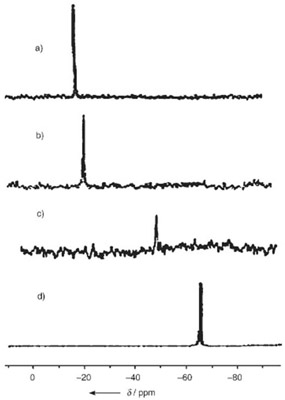| |
Synthesis of microscopic structure-controlled polymers has been a challenge in the polymer research field. Ladder polymer is of particular interest in the field of advanced materials due to its incontestable superiority in thermo- or radiation-resistant and mechanical properties. Particularly, the preparation of a perfect stereo-selective ladder polysilsesquioxane (LPS) has been a tantalizing target of polymer scientists for over four decades In fact the structure of polysilsesquioxanes depends a great deal on the methods for their preparation. As Bailey pointed out, there are many problems in making a perfect ladder polymer. High molecular-weight (Mw) materials are generally random networks. Accordingly, Zhang and his group put forward a supramolecular template strategy named “Supramolecular architecture-directed stepwise-coupling polymerization” by which a series of ordered organo-bridged ladder polysiloxanes (OLPSs) have been successfully prepared in recent years(J. Amer. Chem. Soc., 2002,124 (35): 10482- 10488; Macromolecules. 2006,39, 541-547; Chem. Eur. J. 2006, 12, 3630 – 3635). Recently, they have proposed a confined synthesis method via supramolecular approach, which is based on the self-organization of a,w-ditriphenylene tetrahydroxy-disiloxane (M) by concerted p-p stacking and H-bonding to yield a high regular ladder superstructure (LS) and then a soluble, high Mw and perfect ladder polysilsesquioxane (LP) by dehydration condensation. The width of the SiO3/2 resonance peak in 29Si-NMR which represents the regularity of the ladder polysilsesquionxae is less than 1.0 ppm. Eventually, it makes the foregoing long expectation come true. Also an efficient way is presented to control over stereo-configuration of condensation polymers of achiral monomers via pi- interactions of side groups. Furthermore, a series of control experiments such as XRD of freeze-dried sample, 29Si-NMR, fluorescence spectroscopy and H-D exchange activity was conducted to verify the presence of the ladder superstructure in solution, and the confined environment built by which ensured ordered polycondensation of silanols under alkaline and concentrated solution conditions. This strategy displays a significant advantage over other synthesis processes such as Diels-Alder approach which is only suitable to produce low Mw ladder oligomer. Interestingly, according to molecular simulation, the length of Si-O-Si segment along ladder chain could just match with inter-core distances ranging from 3.5 to 4.0 Å in a typical columnar structure assembled with discotic triphenylene units. Such molecular design also may help clarify formation, evolution and function of the one-dimensional network biopolymrs such as DNA etc.
The paper was published in Angew. Chem .Int. Edit., 2006, 45, 3112-3116. Following passages are taken from referees comments: “…they propose a concept of "supramolecular channel confined synthesis", where an acid-hydrolyzed product of the monomer is supposed to be preorganized via hydrogen-bonding and pi-stacking interactions into a pseudo supramolecular ladder, which can then be polymerized under alkaline conditions to give the corresponding ladder polymer. I feel that this working hypothesis is certainly interesting.”

Figure 1 Schematic representation for the confined polycondensation of the monomer 3 in ladder structure 5 (a) to form the covalent ladder polymer 6 (b).

Figure 2 29Si NMR spectra of: a) 6, b) 5, c) 3, and d) TMDS in toluene

Figure 3 TEM and AFM images of 6: a) A bright-field TEM image obtained by freeze-drying a benzene solution (10_14m); b) high-resolution AFM image of a spin-coated film obtained from benzene solution; c) AFM section analysis; d) schematic representation of the ladder structure observed by AFM and the average value of w is 1.30 nm. , |
|
